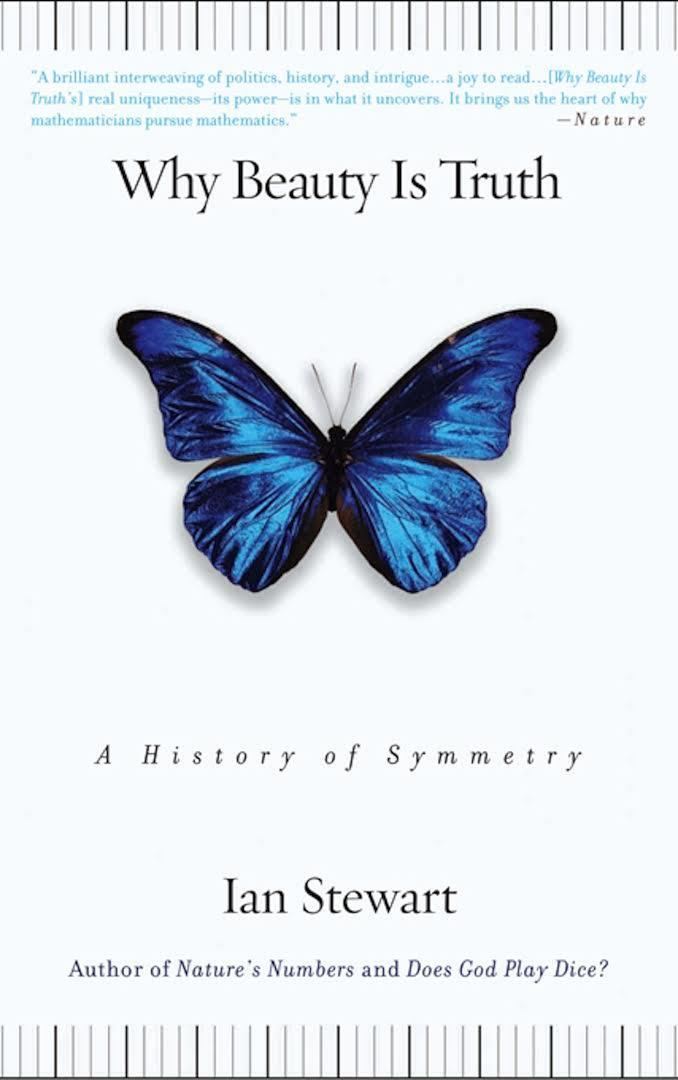7.6 /10 1 Votes7.6
Country United States Subject Mathematics Media type Print, e-book Originally published 10 April 2007 Genre Non-fiction OCLC 76481488 | 3.8/5 Goodreads Language English Publication date April 10, 2007 Pages 304 pp. Publisher Basic Books | |||||||||||||||||||||||||||||||||
 | ||||||||||||||||||||||||||||||||||
Similar Works by Ian Stewart, Symmetry books, Non-fiction books | ||||||||||||||||||||||||||||||||||
Why Beauty Is Truth: A History of Symmetry is a 2007 book by Ian Stewart.
Contents
Overview
Following the life and work of famous mathematicians from antiquity to the present, Stewart traces mathematics' developing handling of the concept of symmetry. One of the very first takeaways, established in the preface of this book, is that it dispels the idea of the origins of symmetry in geometry, as is often the first context in which the term is introduced. This book, through its chapters, establishes its origins in algebra, more specifically group theory.
Contents
The topics covered are:
Review
What makes the book a compulsive read is that Stewart combines the advances in mathematics with the stories of their discoverers, who could be described by the author's preferred collective expression as "a muddle of mathematicians". These compulsive characters are almost archetypal: the romantic, doomed Frenchman dying in a duel over a woman (Evariste Galois); a brilliant yet impoverished academic (Niels Henrik Abel); and, my favourite, a drunken Irishman who "set out to invent an algebra of three dimensions but realised, in a flash of intuition that caused him to vandalise a bridge, that he would have to settle for four dimensions instead" (William Rowan Hamilton). Driven by the compulsion to solve mathematical riddles, they are united by similar qualities: perseverance, obsession, and the kind of genius that seems inevitably to lead to tragedy on an epic scale. Their experiences add a very human dimension to the story.
